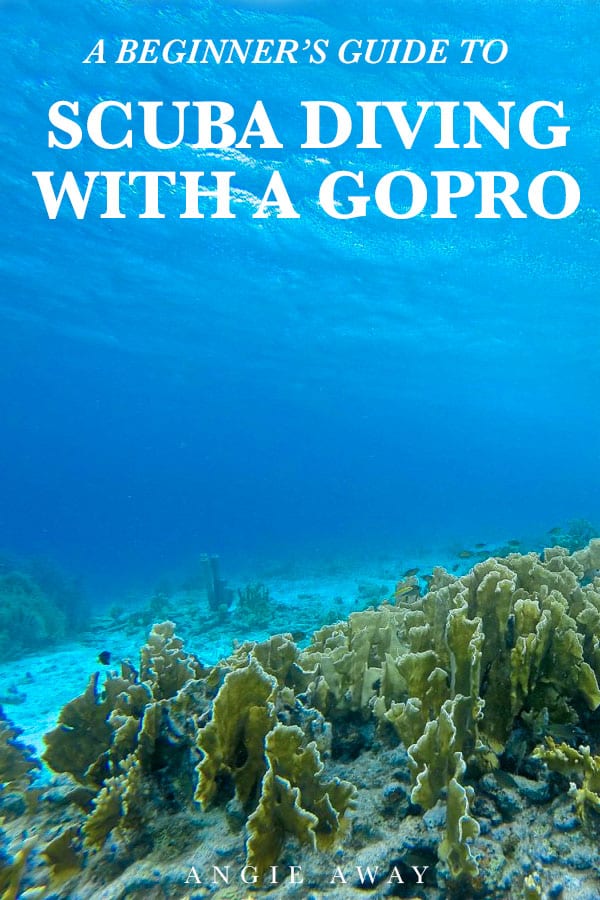The GoPro is the one piece of photo equipment I wish I’d had during my initial two years of RTW travel, in which I used a Canon G12 & underwater housing, an iPhone, and briefly, an Olympus Tough. Despite repairs, my Canon G12 never really bounced back after I smashed it into the ground during a bike accident in Bali, so I didn’t bother lugging it on my recent dive trip to Bonaire. (Though it did turn out some beautiful shots from the Red Sea.)
Bonaire was my first experience scuba diving with a GoPro HERO3 instead of the G12, so I bought a few different accessories to test it out. I won’t blather on about all the technical specifications, but I do have some tips and tricks based on my personal experience using the GoPro on seven Caribbean dives. (I’ve since upgraded to the HERO5 Black, and I recommend always getting the newest model you can afford!)
GoPro Scuba Diving – Do you need it for underwater photography?
Simplicity is the name of the game for me when it comes to photography – especially when scuba diving. I’m not a frequent (or very confident) diver, so I don’t like to add undue stress by dragging a bunch of extra equipment on dives. That’s why scuba diving with a GoPro makes sense for me. It can be as simple or as complex as you need it to be. In its most basic form, it’s a lightweight point-and-shoot, and that’s how I used it in Bonaire.
I shot the first few dives in Bonaire as still photography and while I did get some beautiful shots taking advantage of the GoPro’s 170º wide-angle lens, I wasn’t in love with the majority of my captures. It really is more suited for cinematic stills of a wreck or a large school of tarpon – any subject where you can stand back and photograph a whole scene.


Anything shot less than 12” away can come out quite blurry, and since so much of underwater photography is about those tiny details – the itty bitty shrimp or texture of a colorful coral – you really miss that with a GoPro. Sure, you can cut, crop and sharpen in postproduction, but the raw photos I snapped were pretty average.
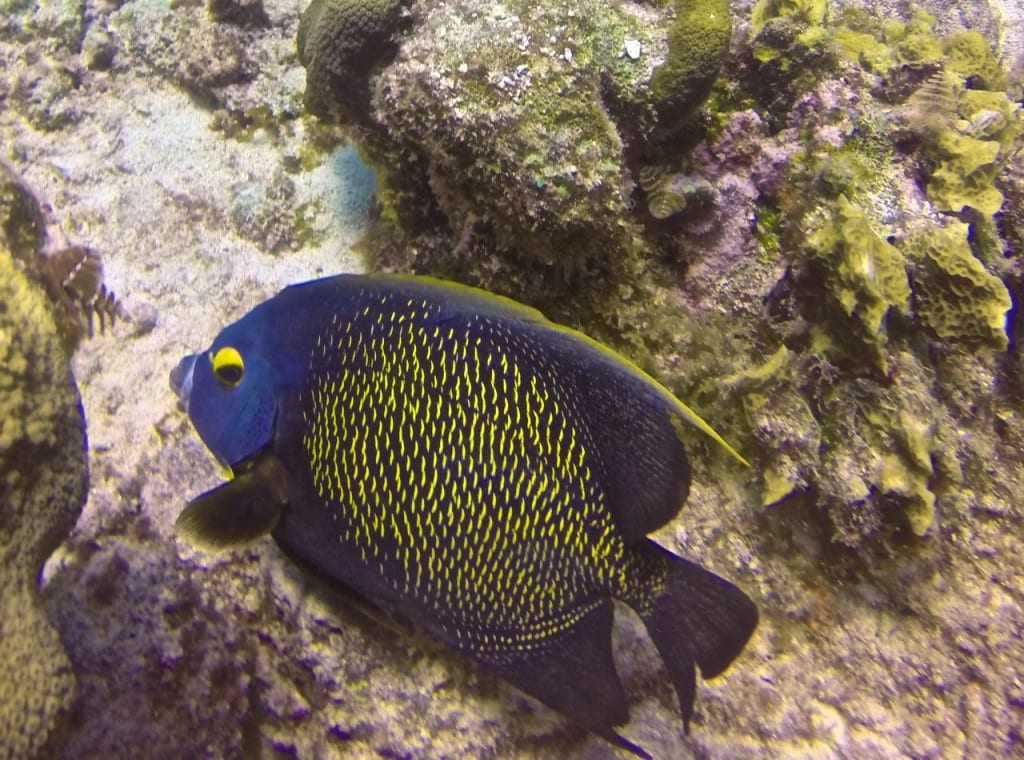

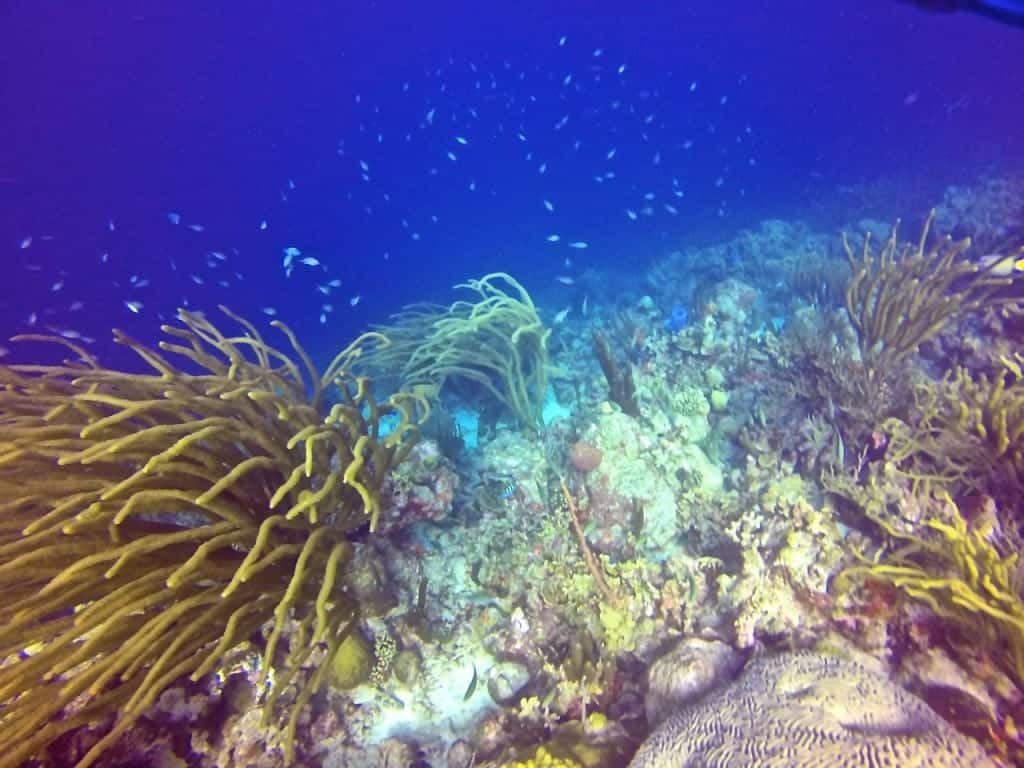
After a couple of days, I switched from photographs to 30-second chunks of video and it made a huge difference in the content I was getting. In post-production, I have been screen-shotting & editing the good stuff, and it works so much better for me than just shooting straight stills.
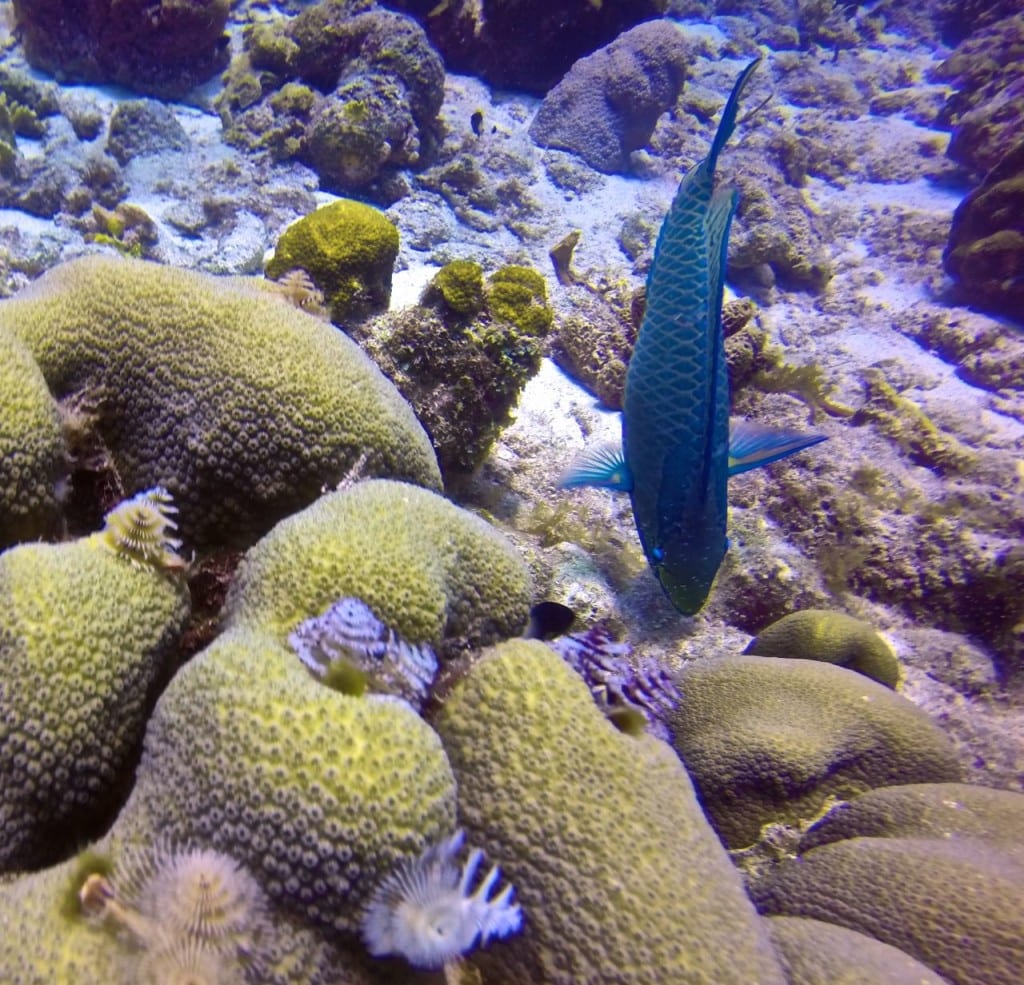
Now, I am not expecting to win any photography contests with these shots, but they do the job of conveying my underwater experience, and that’s what matters. The video I shot was perfect for a scuba segment I did on The Chat a couple weeks ago!
If you want crisp, macro shots of the littlest creatures, get a CanonS100 & the underwater housing. That’ll definitely be my next camera purchase!
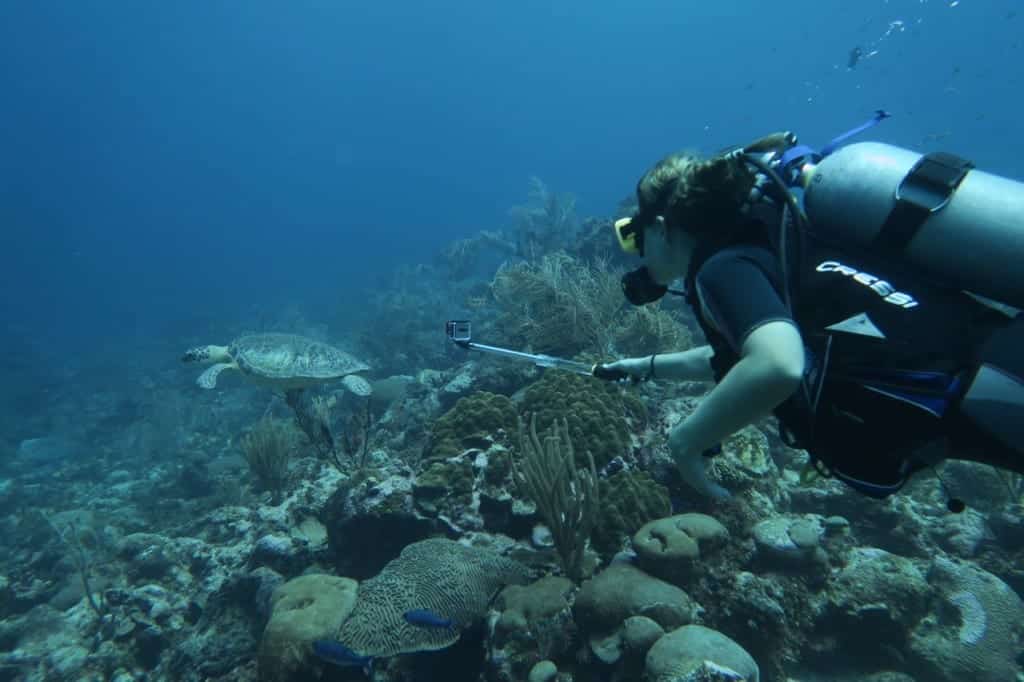
Where to Put the GoPro
Unlike on a kayak or mountain bike, wearing the GoPro on your head while diving really isn’t a great way to capture footage. When I dive, I’m looking all over the place, from the reef to the deep blue and back again in search of sharks, turtles, and rays, and it’s just incredibly difficult to get a steady shot this way. Plus, you don’t necessarily want to stick your whole head in a coral hole in search of critters – you never know what might pop out!
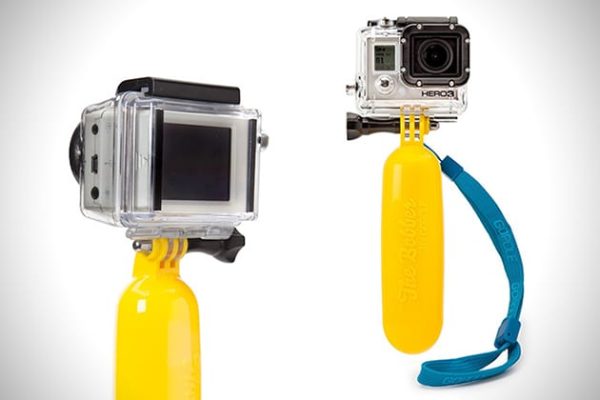
So where should you put it? On my dive trip, I tested out a small, yellow floating hand grip and a GoPole, a clear, plastic, waterproof selfie stick. I liked the concept of the floating hand grip but it didn’t really add length or get my lens any closer to fish – it was more of a handle than anything else. The GoPole really gave me the most range and flexibility, and the ability to poke around a little closer to fishies than I might have been able to with the grip. Plus it provided the more stable footage out of the two options.
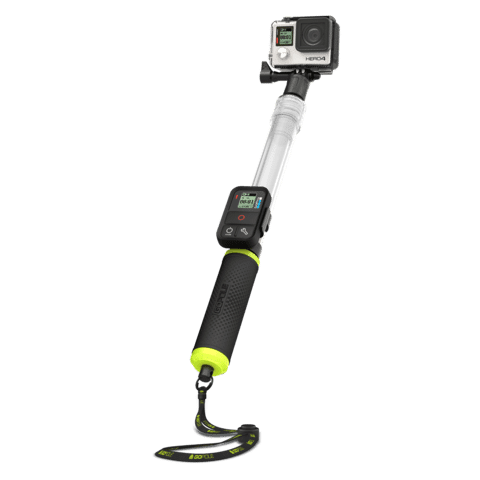
As for the hand grip, I think it’s something I’ll pack in my InCase backpack with other GoPro accessories for use at a waterpark or tubing trip as opposed to underwater. One big plus for the grip – since everyone looks the same underwater, the yellow bobber is so bright, you can easily find yourself in underwater photos after the dive.

External Lighting & Filters
Due to … science… the deeper a dive is, the fewer colors you’ll be able to see and photograph. There are a variety of ways to remedy this, from a complex, potentially expensive lighting setup to a color correction filter that is effective to about 70’. I snapped on a simple red filter, which is best for correcting blue water. There are also magenta-hued filters for green water.
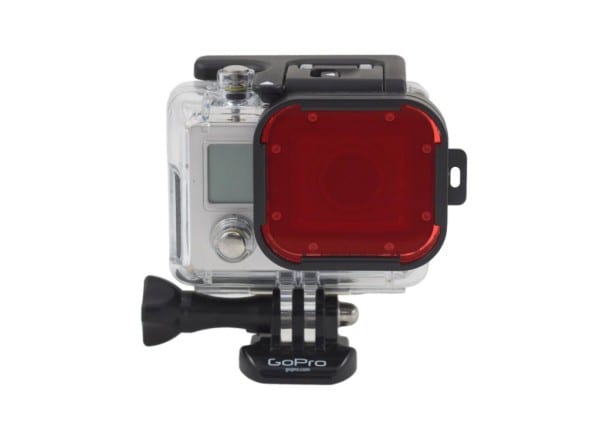
Having now experienced the difference in content with a filter vs. without, I wholeheartedly recommend it. It made such a difference in the raw footage. A worthwhile expenditure!
Extras to Consider when Scuba Diving with a GoPro
- Expert GoPro scuba divers rave about the LCD Touch BacPac, which gives you the ability to see what you’re shooting as you’re shooting it. I haven’t tried it but I worry that I’d be more preoccupied with the shot than the dive, and that’s one of the reasons I actually really like shooting blindly with the GoPro. I focus on being in the moment rather than capturing the perfect shot. (The newest GoPro already has this feature built in.)
- I also hear good things about anti-fog inserts. Fortunately, I didn’t need them during any of my dives, but I can imagine they come in handy and prevent that unintentional vignette look.
- Battery life on the GoPro is notoriously short. Either bring an extra battery or two or bring a portable USB charger, so you can juice up during surface intervals. I don’t leave home without my Cobra JumPack that my grandparents bought me!

Conclusion
The GoPro HERO3 (and subsequent models) is just plain easy – easy to carry, easy to shoot with and easy to manage in between dives and in transit. It has a few downsides, particularly the fact that you can’t shoot tiny critters. For cinematic shots though, the GoPro is an obvious choice.
My priority in Bonaire was the diving – not the photography – but that will change on my next trip. Now that I know about the zillion ways you can jazz up the GoPro, accessorize it, adjust the color, add light, etc. to really capture the most magnificent underwater shots, I’m going to stock up on goodies before the next dive.
All the GoPro Products I Mentioned:
To make it easy, here’s a quick list of all the products I mentioned! Just click to shop.
- GoPro HERO3
- HERO5 Black (later upgrade)
- Floating Hand Grip
- GoPole
- InCase backpack
- Light and Motion Sidekick
- Color Correction Filter
- Simple Red Filter
- Magenta-Hued Fiters
- LCD Touch BacPac
- Anti-Fog Inserts
- Extra Battery
But even as a beginner without a ton of accessories, the GoPro is a super safe bet!
Note: All Amazon links in this post are affiliate links, meaning I will receive a commission for anything you buy on that site within twenty-four hours of clicking one of those links at no extra cost to you. This is just one of the ways I keep AngieAway.com up and running – so thanks for your support!
PIN ME
